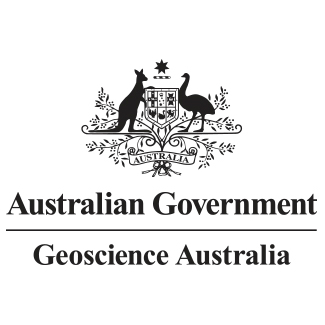Brief description
Lineage
Maintenance and Update Frequency: asNeededNotes
PurposeThis study exclusively used aeromagnetic data publicly available by download from either Geoscience Australia’s GADDS (Geophysical Archive Data Delivery System) portal or from Mineral Resources Tasmania, Geological Survey of Queensland, Geological Survey of Western Australia, Geological Survey of South Australia, Geological Survey of New South Wales, and Geological Survey of Victoria. Much of this data has been acquired as part of exploration initiative programs to encourage and provide support for geological mapping and mineral exploration. In most cases the surveys were flown on either east-west or north-south flightlines at line spacings of between 100 and 400 m and with terrain clearances of 60 to 100 m. We generated depth to magnetisation estimates on flightline data using the TMIM (targeted magnetic inversion modelling) or ‘sweet-spot’ method, which is a semi-automated inversion process. Solutions were generated from a selection of suitable magnetic field features chosen to sample anomalies of different characteristics and clearly different source depths. In some areas, the combination of suitable magnetisations and appropriately located flightlines produce many sweet-spots from which a selection can be chosen. In other areas of fewer sweet-spots a compromise is required in selection of less suitable anomalies that yield less reliable depth values. In all cases for this study, the magnetic data were modelled with tabular bodies, and the body parameters (including depth to top body, body width, strike length, depth extent, dip, dip azimuth, and magnetic susceptibility (SI units)) are included in the Estimates of Geological and Geophysical Surfaces (EGGS) spreadsheets released as a supplementary interpretation data package (https://pid.geoscience.gov.au/dataset/ga/149499). We also assign a subjective measure of ‘depth confidence’ with values of high (H), moderate (M) and low (L); in some instances we also use ‘moderately high’ (HM), and ‘moderately low’ (ML), to reduce step differences in the size of the resulting uncertainty values). These subjective estimates are made from evaluation of the data quality and confidence with which the magnetic field variation is defined, together with evaluation of the suitability of the expected source geometry to support depth estimation. Data quality also incorporates the confidence with which the ground surface can be located. The expected shape of field variations over magnetisations most suitable for source depth estimation can be reasonably predicted and sought-for. We considered these key factors in assigning the depth confidence classification and then use that classification to assign a percentage ‘depth uncertainty’ value. The depth uncertainty value is highly subjective and is indicative only. We assigned an uncertainty of 10% of depth from sensor elevation to the estimated top of magnetisation for ‘high’ confidence values, 25% for ‘moderate’ and 40% for ‘low’ confidence values (low confidence solutions were only used where no other solution was available in the vicinity). ‘Moderately high’ and ‘moderately low’ solutions have percentage uncertainties of 20% and 30% respectively. The aim of this dataset is to provide depth constraints in data-poor areas. They help to construct a better understanding of the 3D geometry of the Australian continent, and aid cover thickness modelling activities. This work, especially when combined with the supplementary interpretation data package, contributes to building a better understanding of the Australian continent, whilst giving the Australian public the tools they need to help them make informed decisions in their areas of interest.
Created: 03 04 2024
Issued: 29 05 2024
Data time period: 2021-11-30 to 2024-05-17
text: westlimit=112.00; southlimit=-44.00; eastlimit=154.00; northlimit=-9.00; projection=GDA94 / geographic 2D (EPSG: 4283)
text: uplimit=0; downlimit=-13300; projection=Australian Height Datum / vertical (EPSG: 5111)
User Contributed Tags
Login to tag this record with meaningful keywords to make it easier to discover
Download Report (pdf) [7.1 MB]
uri :
https://d28rz98at9flks.cloudfront.net/149239/149239_00_0.pdf![]()
Download Data (zip) [941.0 MB]
uri :
https://d28rz98at9flks.cloudfront.net/149239/149239_01_0.zip![]()
- DOI : 10.26186/149239

- URI : pid.geoscience.gov.au/dataset/ga/149239

- global : 7efe415a-8098-4ec4-945c-2d3ae0dd42cf


